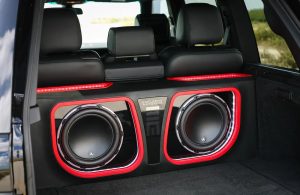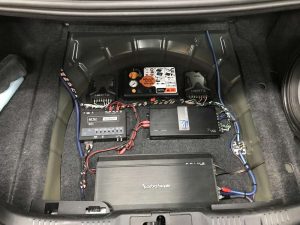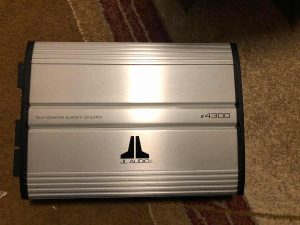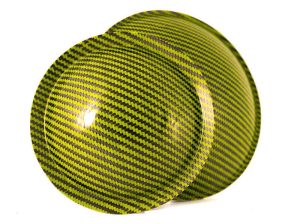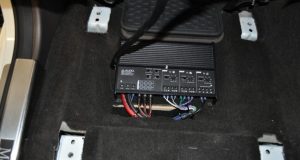Transform your car audio into a concert-like experience with the right Skar amp settings. Skar Audio amplifiers deliver powerful sound, but unlocking their full potential requires precise tuning. Whether you blast hip-hop beats or savor classical melodies, fine-tuning your Skar amp ensures crisp highs, deep lows, and a balanced soundstage. This guide walks you through the ideal settings for your Skar amplifier, offering practical tips to elevate your car stereo system. Let’s dive into creating the ultimate audio experience on the road.
Contents
- Why Skar Amp Settings Matter
- Understanding Key Skar Amp Settings
- Step-by-Step Guide to Tuning Your Skar Amp
- Tips for Maximizing Skar Amp Performance
- Common Skar Amp Setting Mistakes to Avoid
- Tailoring Settings to Your Music Preferences
- Troubleshooting Skar Amp Issues
- Why Skar Audio Stands Out
- Final Thoughts on Skar Amp Settings
Why Skar Amp Settings Matter
Skar Audio amplifiers stand out for their robust performance and affordability. They power your speakers and subwoofers, amplifying the audio signal from your head unit. However, incorrect settings can lead to distorted sound, clipped signals, or even damaged equipment. Properly configured settings optimize sound quality, protect your gear, and tailor the audio to your preferences. Think of your Skar amp as the heart of your car audio system—tune it right, and every drive becomes a musical journey.
Adjusting settings like gain, crossover, bass boost, and phase control shapes how your amplifier interacts with your speakers. These tweaks ensure your subwoofers deliver punchy bass, tweeters produce clear highs, and midrange speakers handle vocals smoothly. Ready to get started? Let’s break down each setting and how to adjust it for the best results.
Understanding Key Skar Amp Settings
Before tweaking your Skar amp, familiarize yourself with its core controls. Each setting plays a unique role in shaping your audio output. Here’s a quick overview:
- Gain (Input Sensitivity): Controls how much signal the amp receives from the head unit. Set it too high, and you risk distortion; too low, and the sound lacks punch.
- Crossover (Low-Pass and High-Pass Filters): Directs specific frequencies to the right speakers. Low-pass filters send bass to subwoofers, while high-pass filters send highs to tweeters.
- Bass Boost: Enhances low-end frequencies for deeper bass. Use it sparingly to avoid overpowering mids and highs.
- Subsonic Filter: Blocks ultra-low frequencies that subwoofers can’t reproduce, protecting them from damage.
- Phase Control: Adjusts the timing of subwoofer output to sync with other speakers, ensuring cohesive sound.
- Level/Volume: Balances the amp’s output to match your head unit and speakers.
With these controls in mind, let’s explore how to set them for optimal performance.
Step-by-Step Guide to Tuning Your Skar Amp
Tuning your Skar amp requires patience and a methodical approach. Follow these steps to achieve a clean, powerful sound that suits your listening style.
1. Prepare Your Car Audio System
Start with a clean slate. Park your car in a quiet, level spot to minimize external noise. Turn off the ignition and disconnect the battery to ensure safety during setup. Gather tools like a multimeter, test tones (available online or on CDs), and a screwdriver to access the amp’s controls. Play a familiar track to gauge the sound as you adjust settings. A well-prepared setup makes tuning smoother and more accurate.
2. Set the Head Unit Volume
Your head unit (car stereo) sends the audio signal to the amplifier. Set its volume to about 75% of the maximum to reflect typical listening conditions. This level ensures the amp receives a strong, clean signal without clipping. If your head unit has an equalizer, reset bass, treble, and midrange to flat (neutral) settings. A neutral starting point lets you hear the amp’s true output before fine-tuning.
3. Adjust the Gain Control
Gain controls the amplifier’s input sensitivity, matching it to the head unit’s output. Incorrect gain settings cause distortion or weak sound. To set it properly:
- Turn the gain knob to its minimum (fully counterclockwise).
- Play a 1 kHz test tone for full-range speakers or a 50 Hz tone for subwoofers.
- Connect a multimeter to the amp’s speaker outputs, set to AC voltage.
- Slowly increase the gain until the multimeter reads the target voltage. Calculate this using the formula: Voltage = √(RMS Power × Impedance). For example, a 500W RMS amp at 4 ohms needs √(500 × 4) = 44.7 volts.
- Stop if you hear distortion before reaching the target voltage, then slightly lower the gain.
This method ensures clean amplification without pushing the amp into clipping. Double-check by playing music—if it sounds crisp, you’ve nailed the gain.
4. Configure Crossover Settings
Crossovers direct frequencies to the right speakers, preventing overlap that muddies the sound. Skar amps typically feature low-pass (LPF) and high-pass (HPF) filters. Here’s how to set them:
- For Subwoofers (Low-Pass Filter): Set the LPF to 80-100 Hz. This sends bass frequencies (below 100 Hz) to the subwoofer while blocking mids and highs. If your subwoofer struggles with higher bass notes, lower the LPF to 60-80 Hz.
- For Full-Range Speakers (High-Pass Filter): Set the HPF to 80-120 Hz. This filters out bass, letting tweeters and midrange speakers focus on clear mids and highs. For smaller speakers, raise the HPF to 100-150 Hz to avoid strain.
- Monoblock Amps: If using a monoblock amp for subwoofers, ensure the crossover is set to LPF mode.
Test the crossover settings with a track featuring varied frequencies. Vocals should sound clear, and bass should hit hard without overpowering. Adjust the crossover points slightly to suit your speakers’ capabilities.
5. Fine-Tune the Subsonic Filter
The subsonic filter protects subwoofers by blocking frequencies too low for them to handle, typically below 20-30 Hz. Set the subsonic filter to 25-30 Hz for most Skar subwoofers. If your subwoofer is in a ported enclosure tuned to 36 Hz (check the enclosure specs), set the subsonic filter just below the tuning frequency, around 30-32 Hz. This prevents overexcursion, extending your subwoofer’s lifespan. Listen for cleaner bass after setting the filter—if the low end sounds tighter, you’ve got it right.
6. Use Bass Boost Sparingly
Bass boost tempts those craving earth-shaking lows, but overuse distorts sound and strains subwoofers. Start with the bass boost off (0 dB). Play a bass-heavy track and gradually increase the boost until the low end feels powerful but balanced. Most Skar amps offer 0-12 dB of boost—stay below 6 dB for clarity. If mids and highs start to fade, reduce the boost. Your goal is rich bass that complements, not dominates, the soundstage.
7. Adjust Phase Control
Phase control ensures your subwoofer’s output aligns with your other speakers. Set it to 0° initially. Play a track with steady bass and toggle between 0° and 180°. Choose the setting where the bass sounds fuller and more integrated with the mids and highs. If your subwoofer is mounted in the trunk facing rearward, 180° often works better due to sound wave travel. Trust your ears—this tweak makes the soundstage feel cohesive.
8. Balance the Level/Volume
The level control fine-tunes the amp’s output to match your head unit and speakers. After setting gain, crossover, and other controls, adjust the level to blend the amp’s output with your system. Increase it until the sound is loud and clear without distortion. If you’re running multiple amps, balance their levels so no speaker overpowers the others. A harmonious mix ensures every component shines.
9. Test and Tweak with Music
With settings dialed in, play a variety of tracks—rock, jazz, hip-hop, or electronic—to test the system. Listen for clarity in vocals, depth in bass, and sparkle in highs. If the bass feels weak, slightly increase the bass boost or lower the LPF. If highs sound harsh, raise the HPF slightly. Small adjustments make a big difference. Take your time to find the sweet spot that suits your musical tastes.
Tips for Maximizing Skar Amp Performance
Beyond basic settings, these tips enhance your Skar amp’s performance and longevity:
- Upgrade Wiring: Use high-quality power and ground cables (at least 4-gauge for most Skar amps) to ensure stable power delivery. Poor wiring causes voltage drops, reducing output.
- Match Impedance: Wire your speakers or subwoofers to match the amp’s stable impedance (e.g., 2 ohms for many Skar monoblock amps). Check your amp’s manual for specs.
- Prevent Overheating: Install the amp in a well-ventilated area. Add a cooling fan if you push it hard. Overheating triggers protect mode, halting performance.
- Use Sound Deadening: Apply sound-deadening mats to your car’s doors and trunk to reduce road noise and enhance bass response.
- Regular Maintenance: Clean the amp’s vents and check wiring connections periodically to maintain peak performance.
These practices keep your Skar amp running smoothly, delivering consistent, high-quality sound.
Common Skar Amp Setting Mistakes to Avoid
Even seasoned audiophiles make mistakes when tuning amps. Steer clear of these pitfalls:
- Cranking the Gain: Setting gain too high causes clipping, distorting sound and risking speaker damage. Always use a multimeter for accuracy.
- Overusing Bass Boost: Excessive boost muddies the sound and overworks subwoofers. Keep it subtle for balance.
- Ignoring Subsonic Filters: Skipping this setting in ported enclosures leads to subwoofer damage from low-frequency stress.
- Mismatched Crossovers: Sending bass to tweeters or highs to subwoofers creates muddy audio. Double-check crossover settings.
- Neglecting Phase: Incorrect phase settings make bass sound weak or disconnected. Test both 0° and 180° to find the best fit.
Avoiding these errors ensures your Skar amp delivers clean, powerful audio every time.
Tailoring Settings to Your Music Preferences
Your ideal Skar amp settings depend on the music you love. Here’s how to tweak them for different genres:
- Hip-Hop/Rap: Emphasize deep bass with a low-pass filter at 80 Hz and a slight bass boost (3-6 dB). Set the subsonic filter to 25 Hz for tight, punchy lows.
- Rock/Metal: Balance mids and bass. Use a low-pass filter at 100 Hz and a high-pass filter at 80 Hz. Keep bass boost minimal to preserve guitar clarity.
- Classical/Jazz: Prioritize clarity and dynamics. Set crossovers to 80-100 Hz for both LPF and HPF, with no bass boost. Fine-tune phase for a cohesive soundstage.
- Electronic/Dance: Boost bass slightly (4-6 dB) and set the low-pass filter to 90 Hz for thumping beats. Ensure the subsonic filter protects subwoofers from ultra-low frequencies.
Experiment with these starting points, then adjust to match your car’s acoustics and personal taste.
Troubleshooting Skar Amp Issues
If your Skar amp underperforms, check these common issues:
- Distorted Sound: Lower the gain or bass boost. Ensure the head unit volume isn’t maxed out.
- Amp in Protect Mode: Inspect wiring for shorts, reduce volume, or improve ventilation to prevent overheating. Disconnect power for 10-15 minutes to reset.
- Weak Bass: Verify phase settings and check the low-pass filter. Ensure the subwoofer’s impedance matches the amp.
- No Sound: Confirm all connections are secure and the amp is powered. Check the head unit’s output settings.
If problems persist, consult a professional car audio technician or Skar Audio’s support team.
Why Skar Audio Stands Out
Skar Audio earns praise for delivering high-performance amplifiers at budget-friendly prices. Models like the RP-1200.1D and SK-M4004D offer robust power and versatile settings, rivaling pricier brands like Kicker or Rockford Fosgate. Their durable build and user-friendly controls make them ideal for both novice and experienced audiophiles. Pair your Skar amp with quality subwoofers (like the Skar EVL or SVR series) and speakers for a complete, concert-quality system.
Final Thoughts on Skar Amp Settings
Tuning your Skar amp transforms your car stereo into a powerhouse of sound. By carefully adjusting gain, crossover, bass boost, and other settings, you create a balanced, immersive audio experience tailored to your music. Take time to experiment, trust your ears, and make small tweaks for the best results. With the right settings, your Skar amp delivers crystal-clear highs, thumping bass, and a soundstage that makes every drive unforgettable. Upgrade your car audio today and enjoy the ride.

